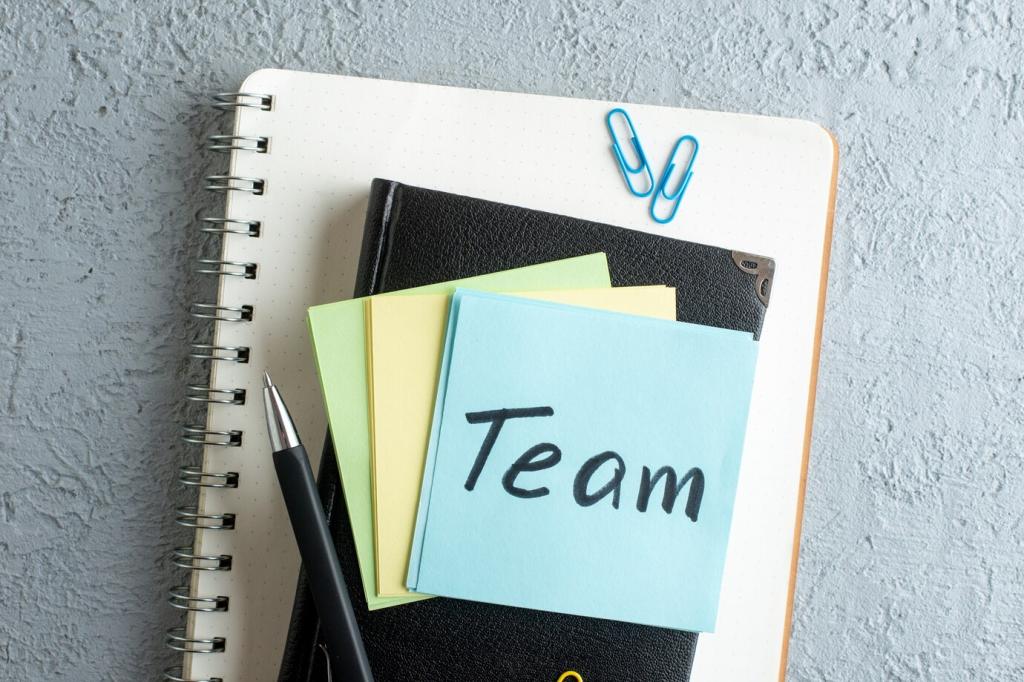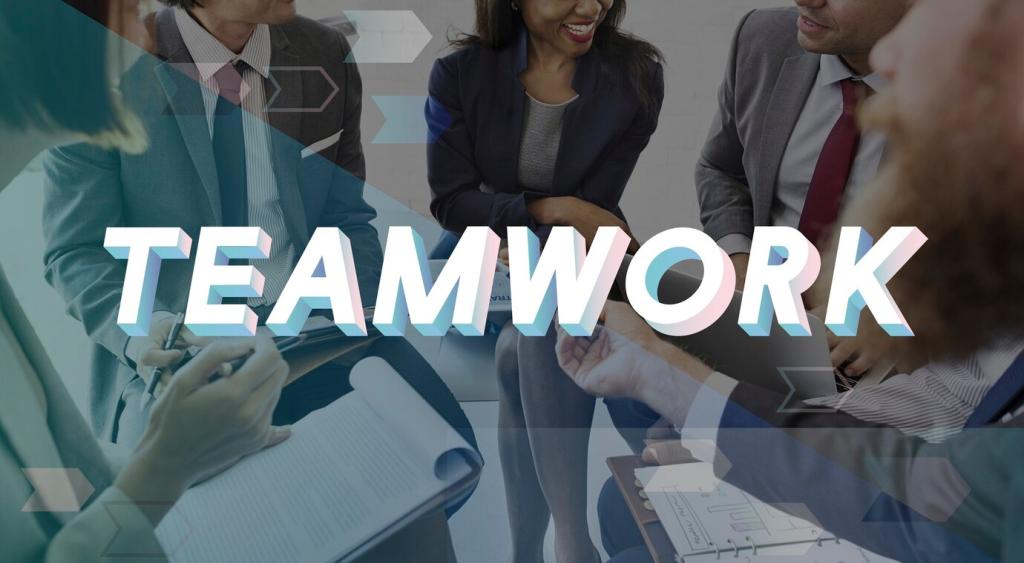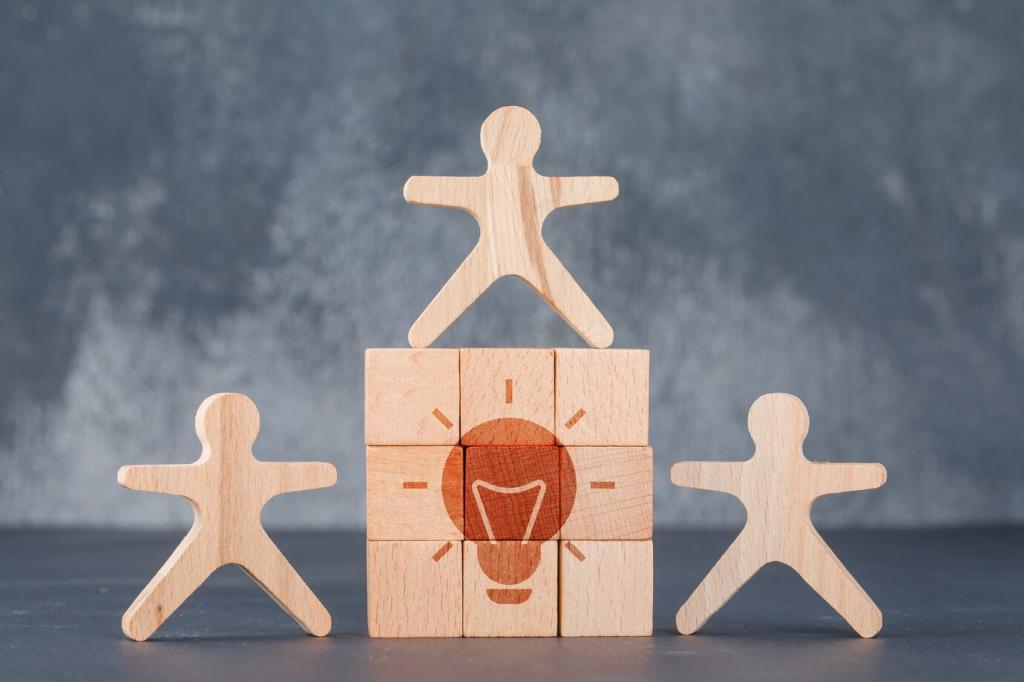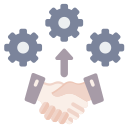Creative Team Collaboration Techniques

Psychological Safety
Creating an environment of psychological safety means ensuring that team members feel comfortable taking risks without fear of ridicule or negative repercussions. Team members who know their ideas will be heard and respected are more likely to contribute novel solutions and innovative concepts. This openness nurtures trust and encourages constructive criticism, ultimately leading to higher levels of engagement and creativity within the team. Leaders play a crucial role by modeling openness, validating all contributions, and celebrating vulnerability as a path to continuous improvement.

Active Listening
Active listening involves more than simply hearing what others say—it means giving full attention, seeking to understand intent, and reframing conversations to show genuine interest. By practicing active listening in meetings and discussions, team members recognize the value in each other’s perspectives. This approach minimizes miscommunication and builds deeper connections, prompting individuals to speak up and collaborate more readily. When everyone feels truly heard, more creative and complete solutions can emerge from the collective wisdom of the group.

Transparent Information Sharing
Transparent information sharing breaks down silos and ensures everyone has access to the knowledge required for effective teamwork. When project goals, progress updates, and potential challenges are communicated openly, team members are empowered to make informed decisions. This clarity allows for better alignment, smoother handoffs, and faster identification of potential pitfalls, leading to more cohesive and creative project outcomes. It also reduces duplicated efforts and fosters a sense of collective ownership over success.

Assigning project ownership ensures accountability while giving individuals a sense of pride and motivation. Owners are entrusted with overseeing specific tasks or deliverables, which clarifies expectations and deadlines for everyone involved. This clarity prevents tasks from falling through the cracks and empowers team members to take initiative. When people understand precisely what they are responsible for, they can focus their creative energy on solving problems and delivering value in their area of expertise.

Acknowledging and tapping into each team member’s unique strengths enables better collaboration and more innovative results. Whether someone excels in ideation, technical skills, or communication, matching responsibilities to strengths enhances confidence and productivity. Team leaders can facilitate strengths assessments or observe working styles to identify and assign roles that amplify individual talents. When everyone operates in their zone of genius, the combined impact fuels greater creativity and collaboration.

Minimizing overlap in responsibilities reduces the risk of duplicated effort and miscommunication. Role clarity should be documented, discussed, and regularly reviewed to adapt to changes in the team or project scope. By proactively addressing any ambiguity, leaders can prevent conflicts and ensure a collaborative focus on shared goals. Teams that operate with clearly defined boundaries can better coordinate their efforts and spend more time on creative thinking rather than clarifying duties.

Cognitive Diversity
Cognitive diversity refers to the inclusion of team members who think and solve problems in distinct ways. When a group brings together analytical minds, big-picture visionaries, detail-oriented organizers, and empathetic communicators, its capacity for innovation expands. Cognitive diversity encourages the team to approach challenges from multiple angles, resulting in richer discussions and more creative problem-solving. Teams benefit from deliberately assembling groups with a mix of thinking styles and regularly inviting unconventional viewpoints.

Cross-Disciplinary Collaboration
Cross-disciplinary collaboration brings together professionals from different fields to tackle challenges holistically. Designers, engineers, strategists, and marketers working together can generate more robust and original ideas than any single discipline alone. By valuing expertise from all areas, teams foster mutual respect and a culture of knowledge sharing. This diversity of expertise helps anticipate obstacles and creates opportunities for creative synthesis, resulting in solutions that are both practical and innovative.
Fostering a Culture of Feedback
Regular Check-ins
Scheduled check-ins, whether weekly standups or one-on-one meetings, provide structured opportunities to exchange feedback, share progress, and address obstacles. These regular conversations foster accountability and help identify small issues before they escalate. By making feedback routine, rather than something reserved for formal reviews, teams can adapt quickly and stay aligned throughout the creative process. Check-ins also reinforce a sense of support and community among members.
Constructive Critique
Constructive critique goes beyond pointing out mistakes; it involves sharing specific, actionable suggestions for improvement while acknowledging strengths. This balanced approach builds confidence and trust, enabling individuals to receive feedback as an opportunity for growth rather than a threat. Teams that master constructive critique can iterate on ideas faster, filter out weaker solutions, and drive the creative project toward higher quality results.
Celebrating Success and Learning from Failure
Recognizing achievements boosts morale, encourages repeat performance, and inspires others to contribute boldly. Equally important is embracing failures as valuable learning experiences. By openly discussing what didn’t work and why, creative teams foster resilience and innovation. Encouraging team members to share lessons learned normalizes experimentation and provides insights that benefit everyone, creating a cycle of continuous improvement.

Maximizing Collaboration Tools
Platforms that support instant messaging, video conferencing, and file sharing keep team interactions fluid and dynamic. Tools like Slack, Zoom, or Microsoft Teams enable spontaneous discussions, quick clarifications, and visual collaboration. The convenience of real-time communication helps maintain project momentum, especially for distributed teams, and supports the kind of ongoing exchange that sparks creativity.
Structuring Productive Meetings
Every meeting should begin with a well-defined purpose and achievable objectives. Knowing the desired outcome helps participants prepare relevant input, remain focused, and measure success by what has been accomplished. Clear objectives prevent meetings from meandering and ensure that time is spent moving ideas forward. When everyone understands the meeting’s aim, creativity thrives within the structured space provided.
Engaged participation is the cornerstone of creative meetings. Facilitators play an essential role by encouraging equal involvement, balancing speaking time, and using prompts or activities to spark discussion. Engagement techniques might include asking open-ended questions or breaking into smaller groups for focused collaboration. When everyone is actively contributing, a broader array of ideas emerges, increasing the likelihood of discovering creative breakthroughs.
Timeboxing involves allocating specific time slots to agenda items, keeping discussion energetic and productive. Establishing and sharing an agenda in advance empowers participants to prepare and stay on track. Carefully managing transitions between topics ensures that every important area is addressed without stifling creative exploration. Productive meetings honor everyone’s time, boost energy, and strengthen the team’s collective problem-solving capacity.

Building Virtual Trust
Trust is the foundation of effective collaboration, and it requires extra effort in remote or hybrid settings. Leaders can foster trust virtually by encouraging transparency, modeling vulnerability, and providing consistent support. Regular video check-ins, personal sharing at the start of meetings, and follow-through on commitments all contribute to a sense of psychological safety. When team members trust one another, they are more likely to share bold ideas and collaborate authentically across digital divides.
Synchronizing Workflow
Coordinating schedules, priorities, and deliverables is crucial when team members work across different locations and time zones. Tools like shared calendars, unified documentation, and project dashboards help synchronize efforts and keep everyone aligned. Asynchronous communication—such as recorded video updates or threaded discussions—allows for flexibility while maintaining progress. Well-coordinated workflows reduce frustration and keep creativity flowing, no matter where team members are working.
Fostering Informal Connections
Strong teams thrive on informal connections, which can be more challenging to create at a distance. Leaders can encourage virtual coffee breaks, casual chat channels, or online team-building activities to replicate the camaraderie of a physical office. These informal moments build rapport, reduce feelings of isolation, and cultivate the trust necessary for candid and creative collaboration. By prioritizing connection as much as productivity, creative teams remain united and inspired remotely.
